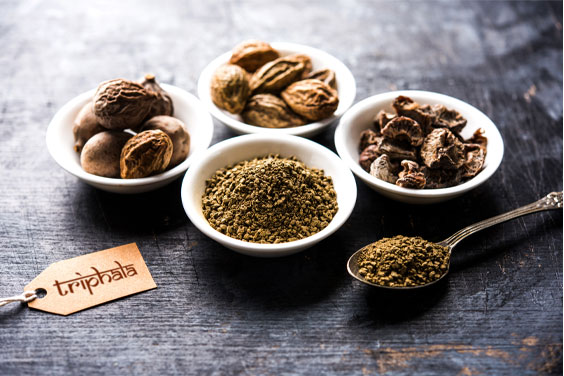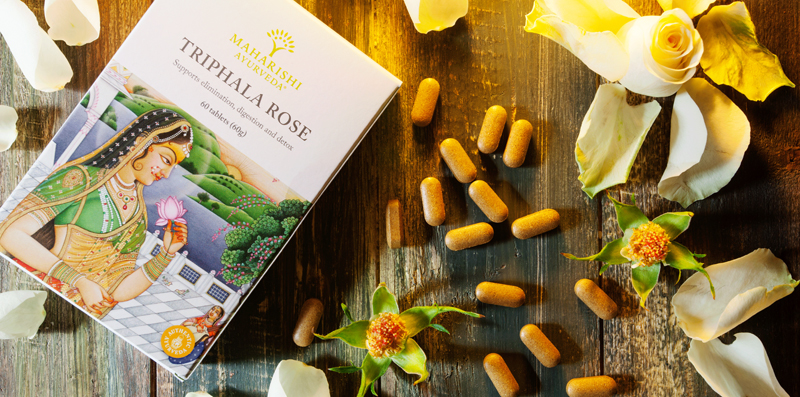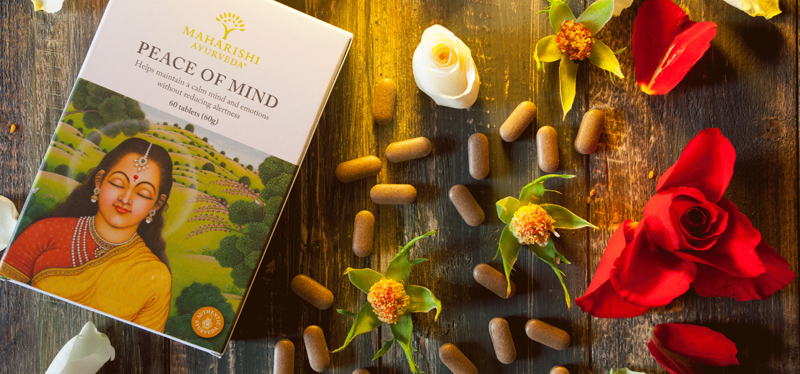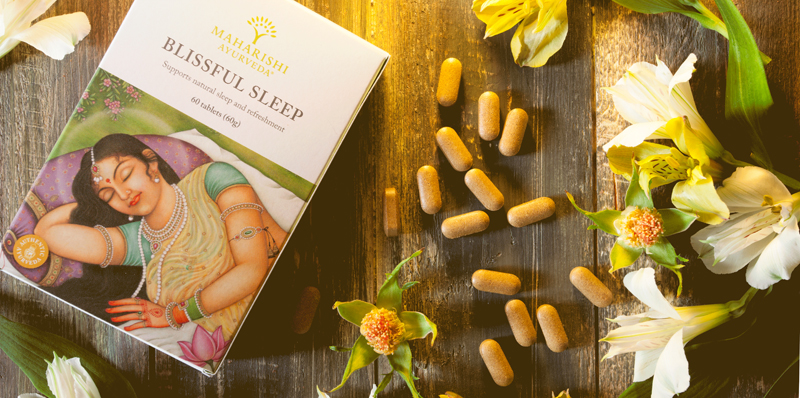Ayurveda – 5,000 Years Young
by Rama Kant Mishra

Ayurveda, the ancient system of holistic healing from India, is justly enjoying a widespread resurgence in popularity today.
Savvy, health-conscious individuals all over the world are taking more responsibility for their own health and well-being. The old adage “prevention is better than cure” makes increasingly more sense in a time when health-care is exorbitant and fraught with risks such as dangerous side effects of drugs that often lead to more problems instead of treating the illness they were taken to address. In a world that offers more choices than ever before, more and more individuals are exploring alternative health systems such as Ayurveda to help them lead a healthy lifestyle and stop disease before it ever has a chance to take root in the physiology.
The story of Ayurveda
According to Vedic tradition Ayurveda, was first enunciated by Brahma, the Creator, in the Brahma Samhita.
One version has it that when disease, in the form of fever, first made its presence known on earth, the rishis (sages) of the time gathered together and sent Bharadwaj to the devas (gods) to get the knowledge to combat it.
Bharadwaj received the knowledge of Ayurveda from Indra, king of the devas. He then taught several sages, who in their turn, propagated the knowledge further. Ayurvedic principles, techniques and formulations were eventually recorded in many texts, such as the famous treatises by Charaka and Sushruta.
Preserved and built upon by traditional Ayurvedic experts, called Vaidyas, Ayurveda flourished in India for millennia until it was relegated to the shadows by long periods of Moslem and British rule.
A holistic approach to healing
Ayurveda – literally “Science of Life” – is based on the related principles of wholeness and balance.
As a holistic healing tradition, Ayurveda identifies and acts on the most fundamental levels of the person rather than focusing on the symptoms of the moment. By doing so the whole person – body, mind, senses, emotions and spirit – is balanced just as when the roots of a tree are nourished and watered, the whole tree will flourish.
Ayurveda makes perfect health its goal and emphasises maintaining and promoting health rather than focusing mainly on disease. It uses individually adjusted diet, sleep, lifestyle, daily and seasonal routines, internal cleansing and herbs to promote health.

Balance is the key: The three doshas
According to Ayurveda, perfect health is a state where mind, body and spirit are balanced.
All activities of the mind and body are governed by three biological principles or doshas-Vata, Pitta and Kapha, each of which is made up of some of the five elements of creation or mahabhutas.
- Vata is mainly air and space, and governs movement in the body-the flow of blood, for example, or elimination or breathing or thoughts flitting across the mind. Since the other two doshas, Pitta and Kapha, cannot move without Vata, Vata is considered the lead dosha.
- Pitta dosha, mainly fire and water, governs heat, metabolism and transformation. Digestion is an important Pitta activity.
- Kapha is made up mainly of earth and water, and, accordingly, is linked to structure and moisture balance in the physiology. Among other things, Kapha controls weight and lubrication in the lungs, for example.
Each of the doshas is also related to a season of the year-Kapha with Spring, Pitta with Summer and Vata with! Fall and Winter.
When all of these doshas are perfectly in balance in an individual, it means that all the systems and activities of mind and body are functioning at optimal levels, and the individual, therefore, enjoys perfect health. When one or more of these doshas goes out of balance, disorders result.
Some factors that can cause these doshas to become imbalanced are improper diet or eating habits, stress, pollution or the weather. Then, to restore good health, the dosha that has become imbalanced needs to be restored to its original make-up in that specific individual.
Prakriti and Vikriti
It has become common to associate Ayurveda just with superficial body-typing, based on the fact that every individual is born as a combination of one or more of the three doshas described above.
Asking “What is your dosha?” or “Are you Vata, Pitta or Kapha?” is just barely scratching the surface of Ayurveda. It is much more important to go beyond introductory body-typing or finding out the Prakriti of an individual to determining what imbalances exist in a person`s physiology (Vikriti) – and then finding out how to restore balance.

Importance of digestion
In the Beej-Bhoomi theory, Ayurveda proposes that just as for a crop to grow both seed (beej) and suitable land (bhoomi) are required in the same way for disease to occur both the infective agent (beej) and unhealthy tissue (bhoomi) are required theory.
If digestion is not optimal, toxins, called ama or digestive impurities, build up in the body and clog the channels of flow. Not just the blood vessels, but all the microcirculatory channels in the body as well as the energy pathways. Ama weakens the physiology, creating conditions fertile for disease and infection to take root.
Ayurvedic rejuvenation and cleansing programs – Panchakarma – are techniques designed to flush ama out of the physiology.
The principles of herb processing and combining
Herbal formulae are an important tool in Ayurveda for maintaining balance.
Although single Ayurvedic herbs and spices such as Brahmi, Turmeric and Ashwagandha are popular they must be used intelligently to get maximum benefit and minimum harm from them. Ayurveda uses the two principles sanyoga and sanskar.
Sanyoga
Sanyoga is the skilful blending of a variety of herbs that results in a formulation offering the dual benefits of synergy and balance.
An Ayurvedic formulation can often contain twenty or more herbs and spices
- primary herbs that target the area of imbalance,
- supporting herbs to enhance the benefits of the primary herbs,
- balancing herbs to counter any possible side-effects from the actions of the main herbs,
- and bioavailability enhancers to expedite the transfer of the benefits of the formulation to the parts of the physiology.
The traditional Ayurvedic herbal combinations with the most fundamental balancing effect are called rasayanas and are extolled at length in the Ayurvedic texts for their positive impact on the physiology.
Sanskar
The second principle, sanskar, refers to the way the herbs are harvested, used and processed.
Ayurvedic formulations traditionally use the whole herb instead of extracting the “active” ingredient from the plant. Nature`s healing wisdom is perceived to reside best in the plant in its entirety. Using the whole herb rather than the isolated ingredient also contributes to a balanced formula less likely to have side-effects, because according to Ayurveda, each medicinal plant has both the primary effect and the opposite effect present in it in its natural state.
At the best Ayurvedic manufacturing facilities, the natural “intelligence” of the plants is carefully preserved in the final product by using traditional processing techniques that eschew chemical solvents and damaging high temperatures. Following the harvesting and processing techniques enunciated in the traditional texts results in a potent yet balanced formulation.

Scientific Scrutiny
Ayurvedic herbs and formulations are increasingly catching the attention of researchers all over the world.
In a heartening trend that seeks to blend the best of the ancient and the modern, not only individual Ayurvedic herbs such as Brahmi and Guggul, but even proprietary rasayanas such as Maharishi Amrit Kalash have been researched at independent institutions to scientifically validate and document their beneficial effects.
Cumulative Benefits
The Ayurvedic approach to health is gentle and comprehensive.
The concepts of instant cures and pill-popping for immediate relief are foreign to Ayurveda. Because the endeavour is to seek and correct the source of problems – imbalances in the physiology – the best results from Ayurveda come to those who are patient and persistent, who diligently adopt the associated dietary and lifestyle changes needed, and take a degree of responsibility for their own well-being.
For those who do make the commitment, Ayurveda offers rich, cumulative health benefits that can help you enjoy a long, healthy and blissful life.

Rama Kant Mishra comes from a long line of Raj Vaidyas – physicians to the erstwhile royalty of India. He is currently Director of Research and Product Development at Maharishi Ayurveda Products in Colorado Springs. His perspective on health and wellness issues can be read in a free monthly Ayurveda newsletter published at http://www.mapi.com.
DISCLAIMER: The information in this document is presented for the sole purpose of imparting education on Maharishi AyurVeda and neither the information nor the products are intended to diagnose, treat, mitigate, cure or prevent any disease. If you have a medical condition or are pregnant or lactating, please consult a health professional and it is recommended that you speak with your physician before making significant changes to your diet or routine.





